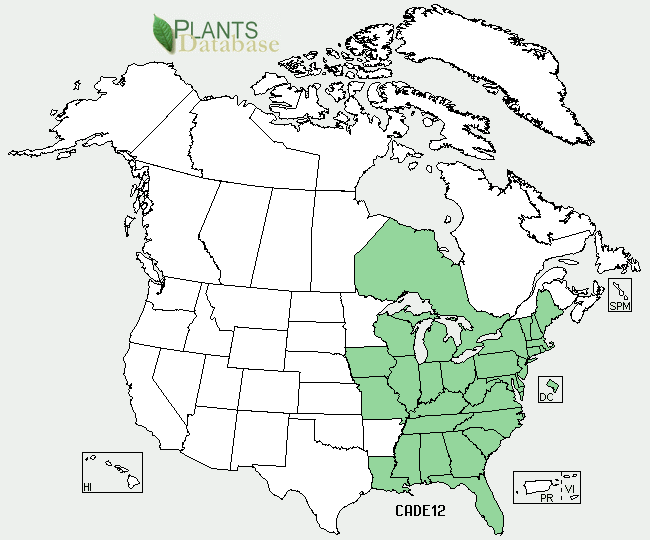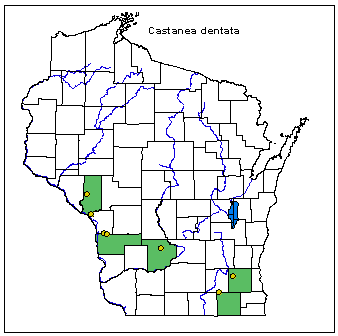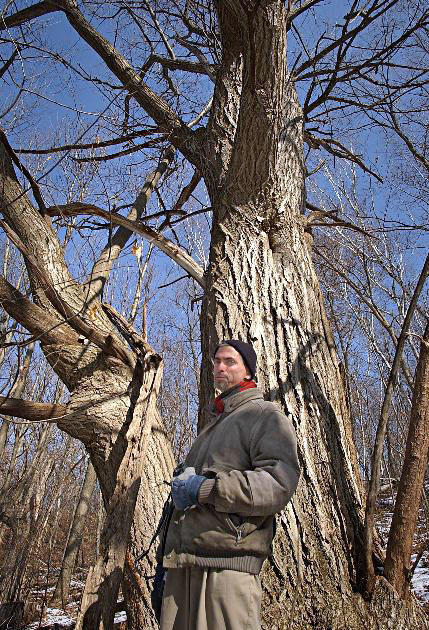Home base
Native to southern Ontario, Castanea dentata extends down southward to the mountainous areas of the United States to the southern end of the Appalachian Mountains. However, the chestnut tree is now quite hard to come by and has been officially declared a threatened species by the Canadian government, since the introduction of chestnut blight. Due to destruction and virulence of blight, the best adaptive range for Castanea dentata is anywhere OUTSIDE the native range, shown below. Species of the chestnut can also be found in the temperate regions of Central and Southern Europe, northern Africa, China and Japan.
About 15 miles east of La Crosse, Wisconsin, located in West Salem, lies the largest remaining stand of the American Chestnut trees (the northernmost shaded county, at right). The grove started in the early 1900's by Martin Hicks, a farmer who planted only a handful of East Coast chestnut seeds on the ridge overlooking his farm. Castanea dentata is not native to the area of La Crosse County, but it flourished and multiplied dramatically to over 6000 trees. Until the mid 1980's, the stand was free of blight since it was, in fact, outside the native range.
Now known as "Chestnut Hills," the stand of West Salem is researched extensively as a means to save the last of the American Chestnut. The trees are gradually declining in numbers with approximately 600 trees infected with the virulent fungus, as of 2002, and much more dead and gone in present day. Take the time to visit the research site of the University of Wisconsin-La Crosse, located on Chestnut Hills. Shown to the left is the Record Chestnut Tree found in West Salem. Below, my professor is pictured with the celebrity.
Continue on to the nutritional requirements of C. dentata and the acquisition of some high quality glucose and H2o...
Feel free to check out other students' pages as well as our University's website below:
University of Wisconsin-La Crosse


